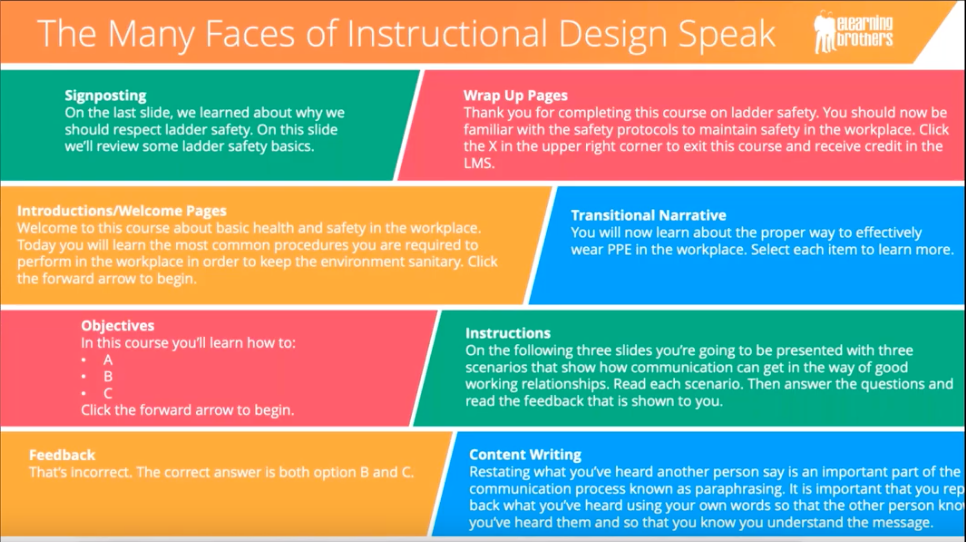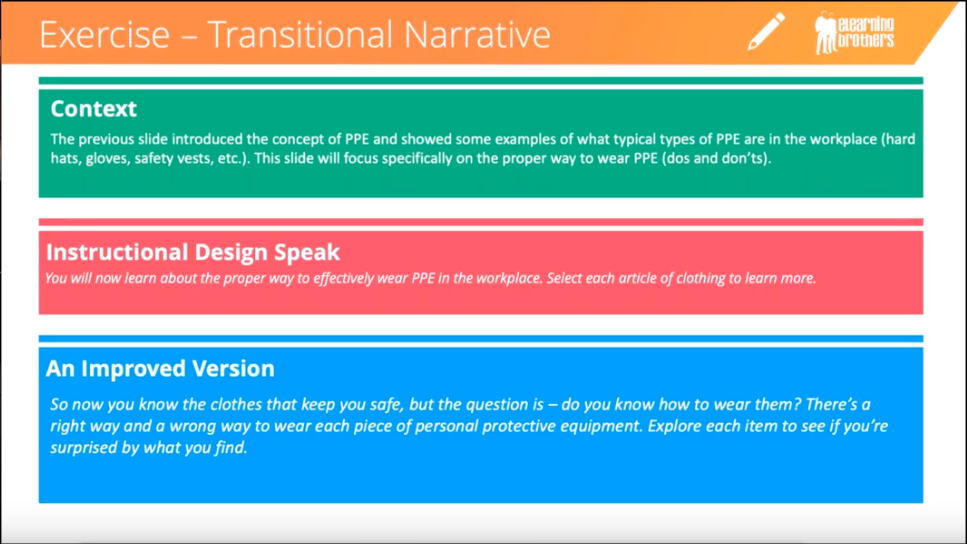Instructional Designers can’t help that we want to inform. To be helpful. To be instructive! It’s our whole purpose. What we often fail to realize is how absolutely boring that style of writing comes across as in a course, and how disengaging it can be for a learner slide after slide. Instead, we need to learn to separate our instructional efforts (in the design of the course) from our narrative writing (creating the experience of the course).
In this webinar, Senior Instructional Designer Misty Harding shared real examples of the common elements of a course that get “borified” by our instructional instincts and how to rewrite them in a way that creates an experience for the learner that is more engaging, immersive, and learner-focused. Attendees were encouraged to submit their own rewrite suggestions. It was a highly interactive and info-packed session! And all of these instructional design tips can be applied no matter what authoring tool you use.
FREE eBook available now! Get all of Misty's tips and the best audience rewrites in a downloadable eBook. Scroll to the bottom for your download.
Misty started by sharing two contrasting party invitation examples. They were both for the same event, but written very differently.

The first invitation was short and sweet, saying “Join us for apps, eats, and treats! Bring trunks for the pool, a gift for Charlie, and all your best stories to roast him with! See you Saturday!”
The second invitation was a paragraph of instructions starting with “Please get in your car and come to Charlie’s 40th birthday party. First, you’ll find a place to park. Then you’ll remove your shoes before entering the house.” and so on, enumerating each phase of the party.
Sounds like a fun time, right?
Not really.
All too often, instructional writing ends up being like the second party invitation.
Instructional Design Speak
A writing style unique to instructional designers in which they detail their instructional plans to the learner instead of using an engaging and conversational writing style that would draw the learner into the experience.

When writing course instructions, remember that the way we “sell” an experience, and the manner in which we “invite” others to participate in it, strongly affects their level of interest.
Things to Avoid When Writing eLearning Instructions
- Explaining exactly what you have planned, sometimes even several slides at a time
- Clinically detailing every step of the experience the learner needs to take until they fall asleep from boredom
- The strong belief that the learner will naturally want to participate in an educational activity because it’s “good for their brain”
- Never talking about what’s in it for the learner
- Breaking the 4th wall to be Captain Obvious and tell everyone exactly what’s going on because you crafted it and you’re super smart
Rewriting Instructional Design Speak
Misty went through a ton of different examples of instructional design speak and talked through how to rewrite each bad example for better engagement. Attendees got in on the action too, submitting their ideas for rewrites. Here’s one example from the webinar. Watch the recording to see the rest and hear some of the top ideas from attendees.

Watch the Recording Now
As part of our custom development team, Misty helps organizations build the most engaging, effective eLearning possible.
Contact eLearning Brothers Custom Solutions to learn how we can help you solve your training challenges.
FREE eBOOK! Download all of Misty's tips, along with the best re-writes from the webinar audience, in eBook form for easy reference.








